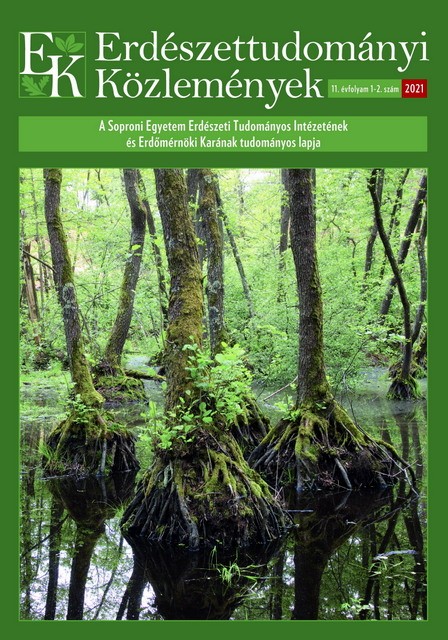Impacts of different silvicultural practices on the spread of Tree of Heaven (Ailanthus altissima (Mill.) Swingle) in calcareous sand forests
Arnold Erdélyi, Judit Hartdégen, Ákos Malatinszky, János Csaba Lestyán & Csaba Vadász
Correspondence
Correspondence: Erdélyi Arnold
Postal address: H-2337 Délegyháza, AKÖV-sziget 8.
e-mail: arnoldoooo[at]gmail.com
Abstract
We examined the changes in the prevalence and abundance of Tree of Heaven in several forest stands in the Peszéri-erdő (Central Hungary), where logging activities were carried out or previously stump deposits were made. According to our results, selective thinning and clear-cutting can have a significant effect on the activation of the seed bank of Tree of Heaven. Due to the abrupt growth of light availability, the soil disturbance and the other effects of log transport, the forest management activities may result in a reforestation, where the Tree of Heaven becomes dominant. In comparison to the spontaneous spread measured in control stands, forest management activities resulted even in a hundred times higher growth in both the prevalences and abundances of Tree of Heaven from one year to another. In the surveyed artificial reforestations, the stump deposits proved to be the main objects where this species can regenerate from. It can resprout from its stumps and root remnants as well, then propagate within a few years and invade the intact, young stands. In addition – based on our local observations –, we also highlight the verticillium wilt as a control possibility against the Tree of Heaven.
Keywords: Tree of Heaven, invasive tree species, anthropogenic forest disturbances, logging, stump deposit, verticillium wilt
Open Acces
For non-commercial purposes, let others distribute and copy the article, and include in a collective work, as long as they cite the author(s) and the journal, and provided they do not alter or modify the article.
Cite this article as:
Erdélyi, A., Hartdégen, J., Malatinszky, Á., Lestyán, Cs. J. & Vadász, Cs. (2021): Impacts of different silvicultural practices on the spread of Tree of Heaven (Ailanthus altissima (Mill.) Swingle) in calcareous sand forests. Bulletin of Forestry Science, 11(1): 41-53. (in Hungarian) DOI: 10.17164/EK.2021.002
Volume 11, Issue 1
Pages: 41-53
First published:
21 March 2021
Related content
7
Related content in the Bulletin of Forestry Science*
* Automatically generated recommendations based on the occurrence of keywords given by authors in the titles and abstracts of other articles. For more detailed search please use the manual search.
